As the seasons turn a new leaf, India witnesses an array of colourful festivities named Durga Puja, Navratri and other such festivals. The Voices team of students, which runs across the length and breadth of the country, peeps into the colourful world from the north of India to the south, traversing its way from east to west.
Eat, Pray and Love – add music and dance with fasting options to it, and that’s the Indian festival of Navratri.
The Shardiya Navratri festival, celebrated from September to October, is a prime instance of unity and diversity India cherishes. Even as the nine nights of the festival are celebrated differently across the different states, the common theme is the veneration of the various forms of Goddess beginning on the first day of the bright fortnight (the fifteen days leading to Purnima or Full Moon) of the lunar calendar.
In the North, most households celebrate Navratri by holding Jagraatas (staying awake all night singing devotional songs called bhajans), Mata ki Chauki’s or kirtans (singing devotional songs). The festival is also linked to Lord Rama’s return after his war with Ravan, and at many places in the North, ‘Ram Leela’, a skit about the life and teachings of Lord Ram, is also performed for each of the nine nights. The skit culminates with an enthralling spectacle of fireworks, usually held at huge public grounds on the tenth day, as the actor playing Lord Rama’s character shoots a burning arrow into huge effigies of the demon king, Ravana and his brothers. The tenth day is celebrated as Dusshera.
On the other hand, down South, in the state of Karnataka, actors with elaborate make-up enact the ‘Devi Mahatmay’, which are stories about how Devi (goddess) killed demons. These dance drama routines, called Yaksha Gana, are very popular. In Mysuru, the 10-day Dussehra festival has been the state festival ever since Raja Wodeyar first celebrated it with great pomp in 1610. Tamil Nadu and other states celebrate Navratri by displaying dolls and figurines on odd-numbered steps or platforms. The decoration is called by different names, such as Golu/Gombe Habba or Sumathi, across states.
Durga puja remains one of the most important festivals in India’s eastern states. In Bengal, Pujo’s are an amalgam of religion, traditions, art and culture. Goddess Durga is considered the daughter who has come home to her `maayka’ (maternal home) with her children. Huge pandals are set up with beautiful idols of the Devi, and her kids are the main attraction for the devotees. The atmosphere is of a cultural fair with performances by renowned artists. The highlight is the delicious food served as part of the Bhog Prasad (food offered to Gods).
Like the other states, Maharashtra celebrates Navratri. ‘Ghatasthapana marks the first day of the nine-day festival. On Dussehra, there is a symbolic tradition of giving leaves of the ‘Apta’ tree as ‘gold’ to the elders at home.
In Gujarat, during Navratri, dancers move to the beats of garba music in almost every lane, Pol (housing clusters), and open ground.
With 22 official languages, India is a diverse country, but our festivals unite us. The form and style may vary, but the spirit counts. Here’s a peek into how the country is celebrating Navratri.
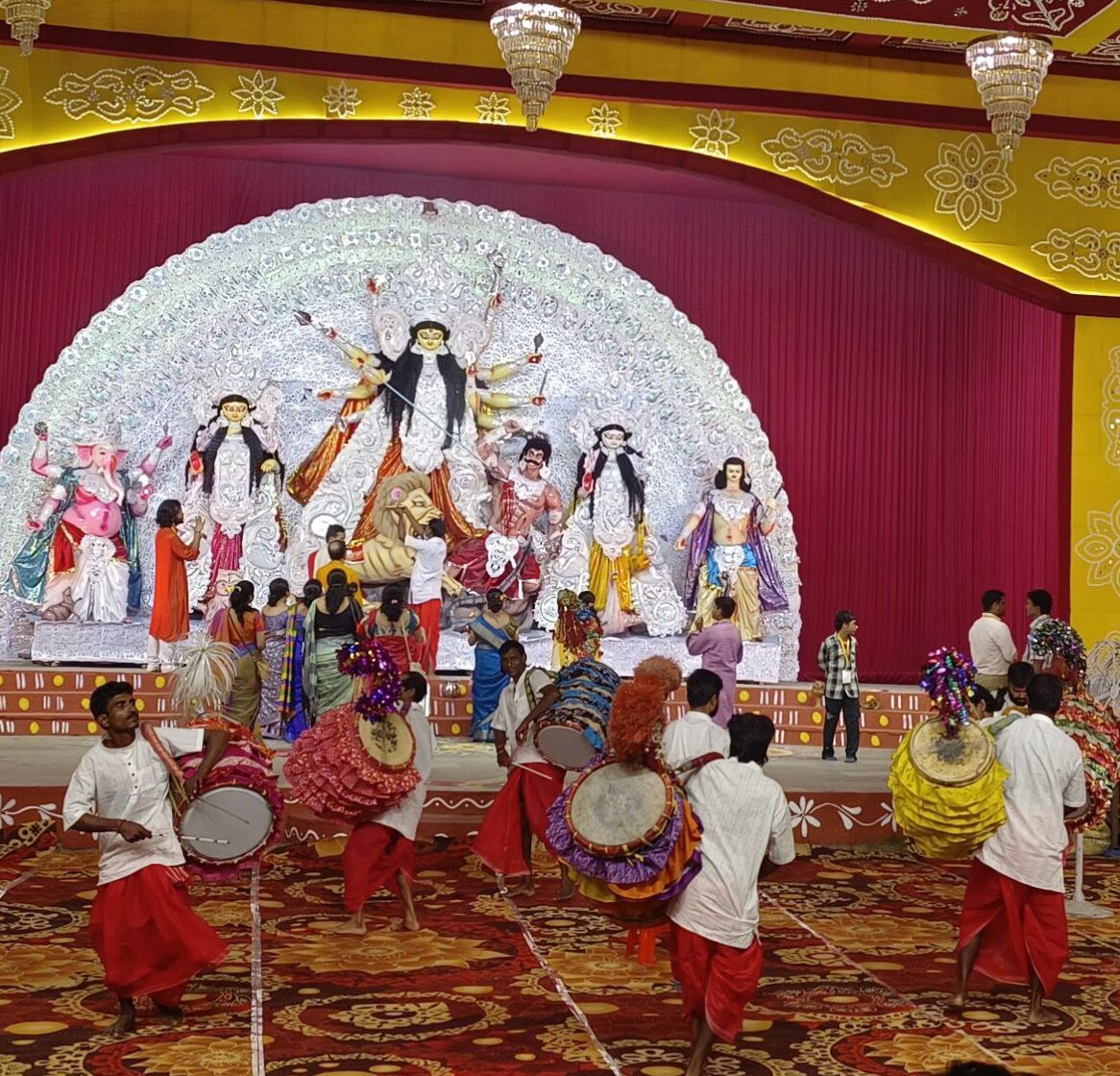
A group of Dhakis (traditional drummers) play the dhak at Chittaranjan Park, New Delhi. The Dhak, a large, double-sided drum played with two sticks to produce a deep, resonant sound. It is played standing, with the drum slung over the shoulder. The rhythmic beats of the dhak are an integral part of the Pujo celebration. The music of the dhak is not just a sound; it energises the crowd, adds to the festive spirit and enhances the spiritual vibe. Dressed in traditional attire, the Dhakis performance adds to the cultural richness of the festival. (Photo Sahiba Khatoon)

A Durga Puja pandal in Agartala, Tripura, was built using dried Bokul flowers, Salpata leaves, Mehagani and other organic materials. After West Bengal, Tripura is known to host the country’s second-highest number of puja pandals. This year, over 2500 pandals have been set up. (Photo Manisha Ghosh)

During the nine days of Durga pooja, parts of eastern Rajasthan, Bundelkhand and Gwalior regions of India still follow the tradition of young children going door-to-door singing folks songs while carrying figurines of the local deities, ‘Jhenji’ and ‘Tesu’. ‘Jhenjhi’ symbolises female qualities like nurturing, beauty, and fertility and ‘Tesu’ represents the male counterpart, signifying strength and vitality. The children mimic the marriage between the local deities, with the entire community participating in it. (Photo Vanshita Jain)
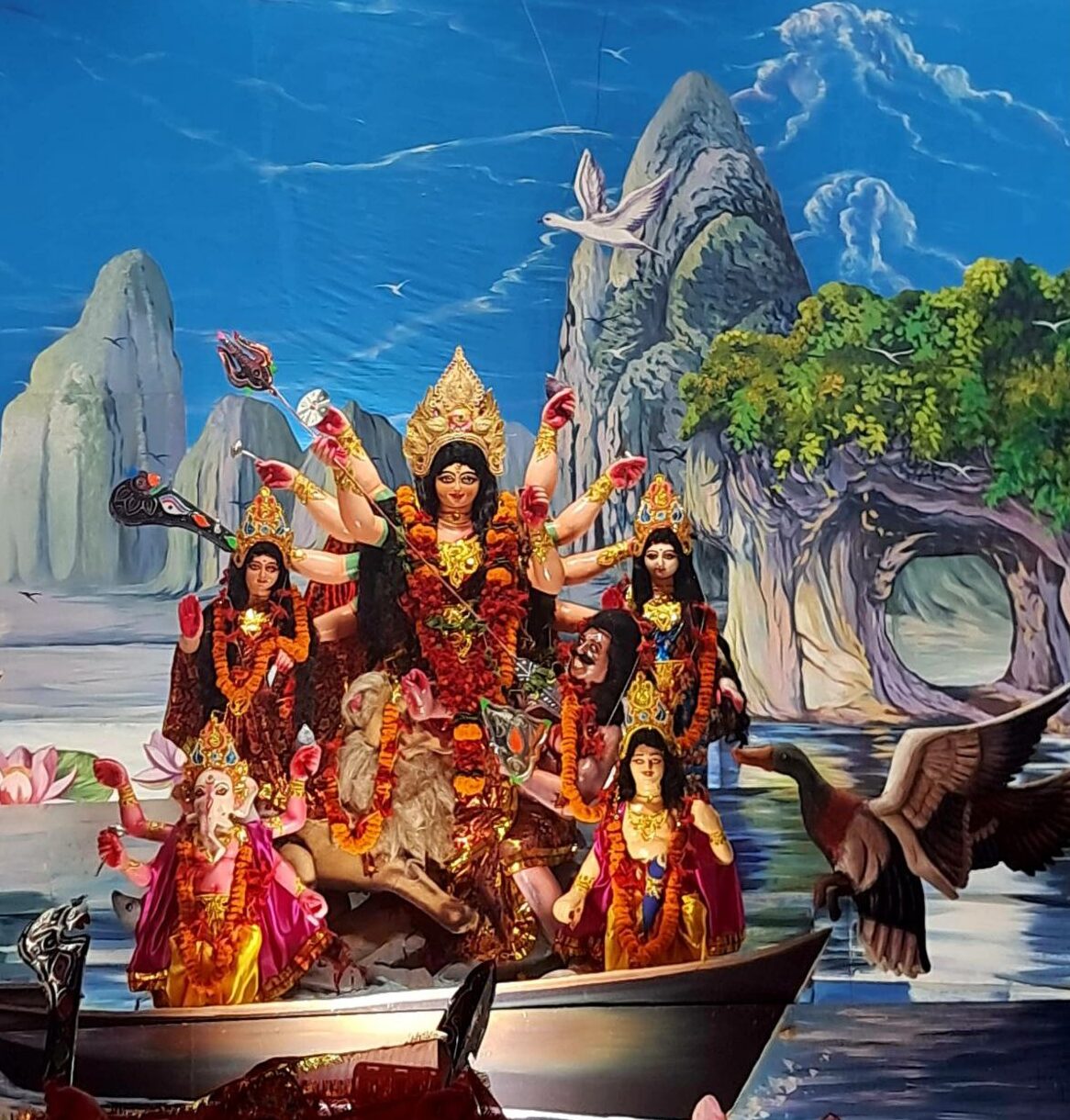
In the steel city of Bokaro, Jharkhand, pandals exhibit their creativity through themes. The theme at Ram Nagar Colony, Chas, is global warming. (Photo Roshan Kumar)
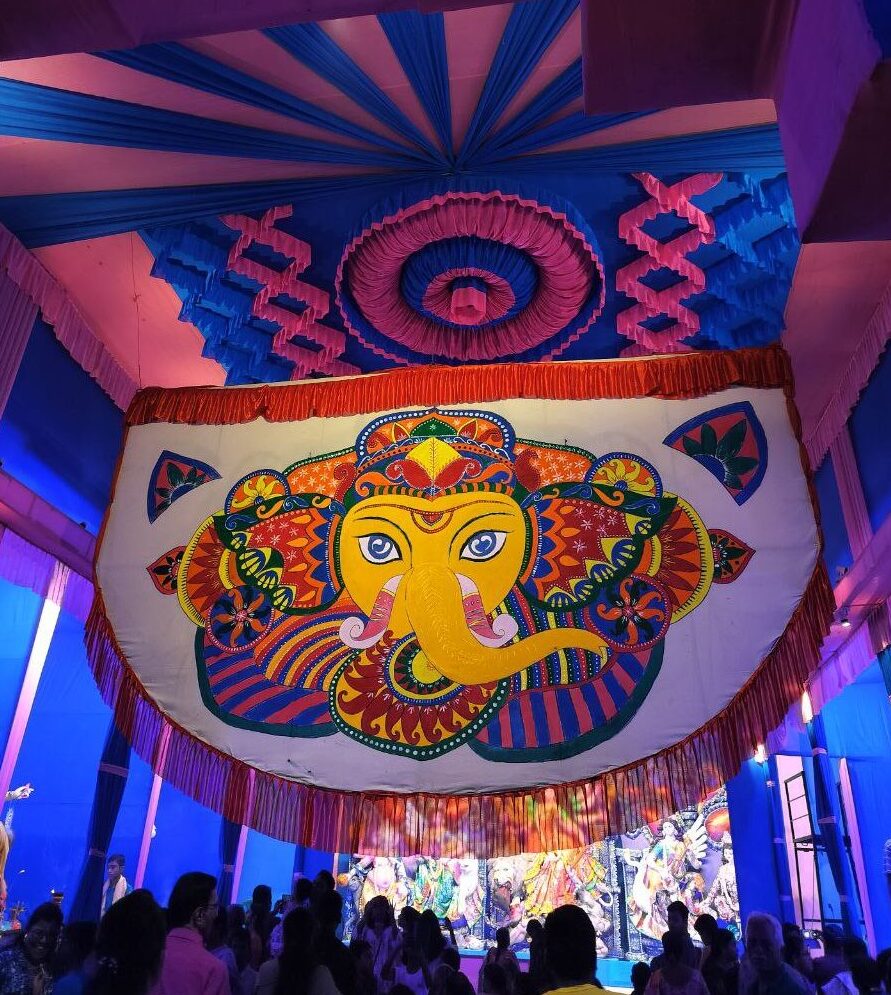
A hand painted banner of Ganesha done by the local community at a pandal in Kolkata. The banner is placed at the entrance to the Nabo Durga pandal, where devotees are worshipping all nine forms of Goddess Durga.(Photo Madhupriya Sengupta)

A beautiful Durga Pujo pandal showcases intricate decorations while celebrating faith and culture at Safdarjung, Delhi. (Photo Mansi Bhandari)
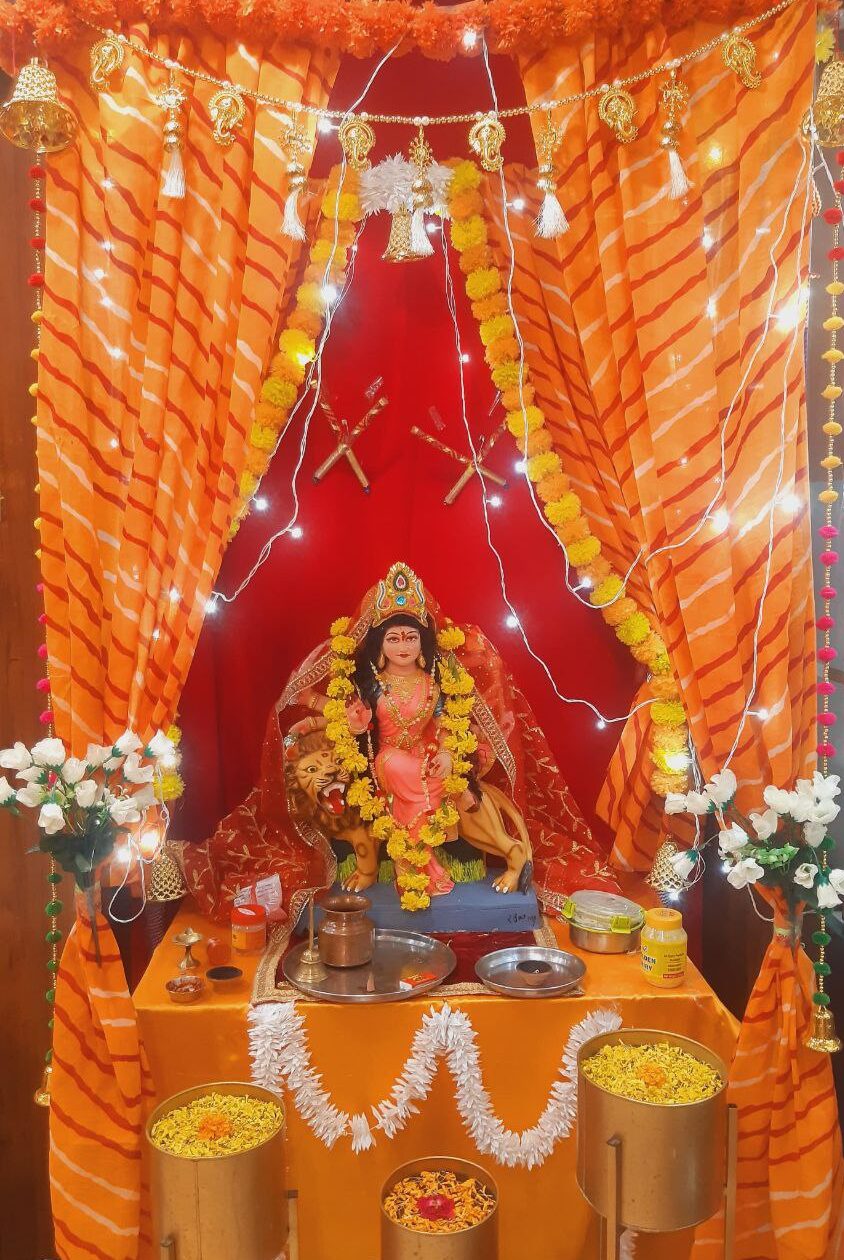
Maa Durga worshipped at a home in Noida, Uttar Pradesh, with special prayers for the nine days of Navratri. (Photo Akriti Awasthi)

In Mysuru, the 10-day Dussehra festival has been the state festival ever since Raja Wodeyar first celebrated it with great pomp and splendour in the year 1610. The Jamboo Savari (elephant procession) is the festival’s highlight every year. This year, all major roads and circles of Mysore have been illuminated by LEDs, covering a stretch of 130 km for Rs 6.5 crore for the 10-day festival. (Photo Dipta Joshi)
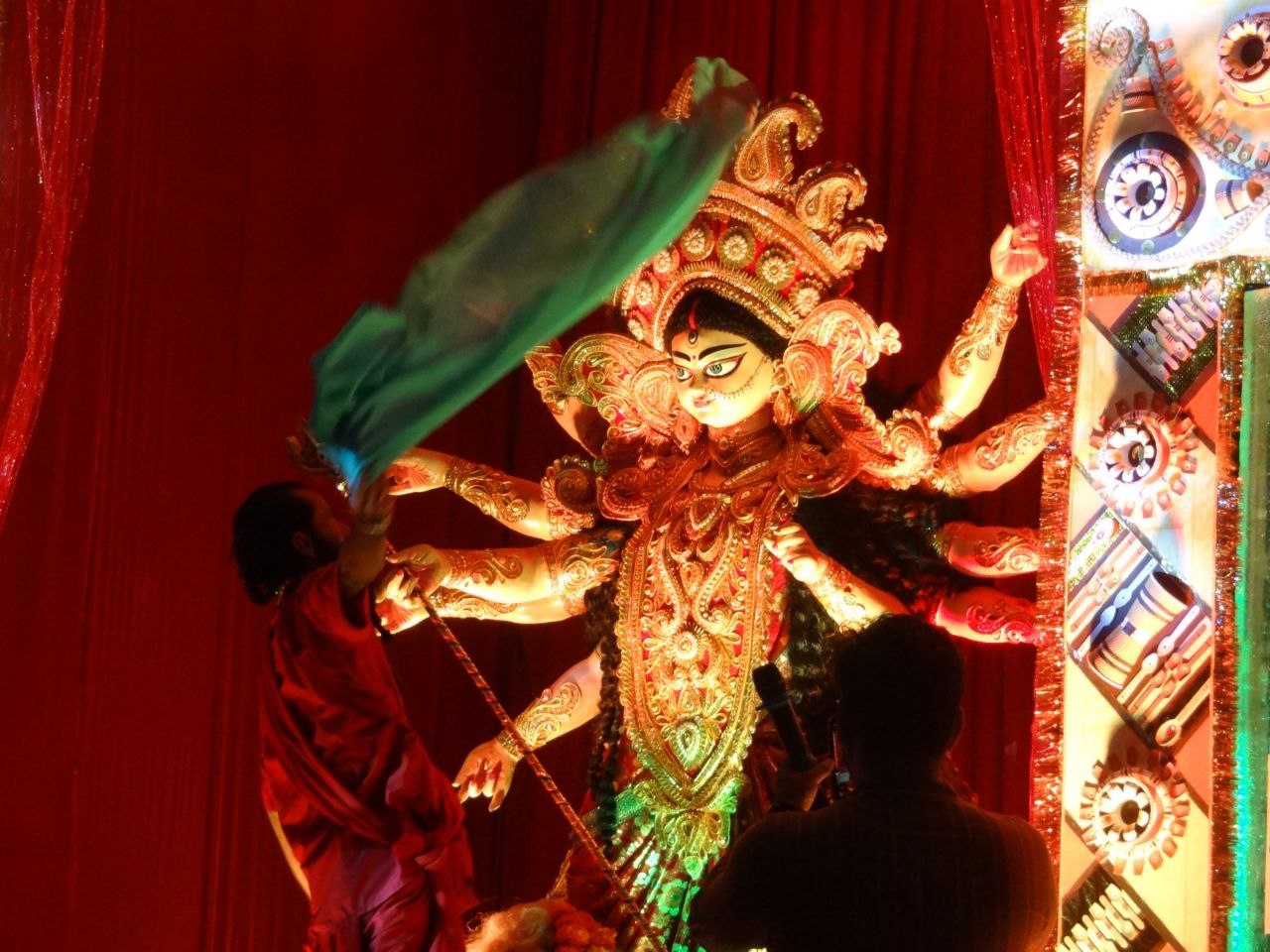
In Hyderabad, the Uttaran Bangiya Samiti has organised the Durga Pujo. This is the first theme-based Durga Puja in the city, and this year’s theme is ‘Palki’ as, according to Bengali Panjika (astronomical almanack), Goddess Durga arrived in a Palki this year. The Devi Durga Durga awakens on the first day of Durga Puja, called Maha Sashthi. (Photo Manisha Ghosh)
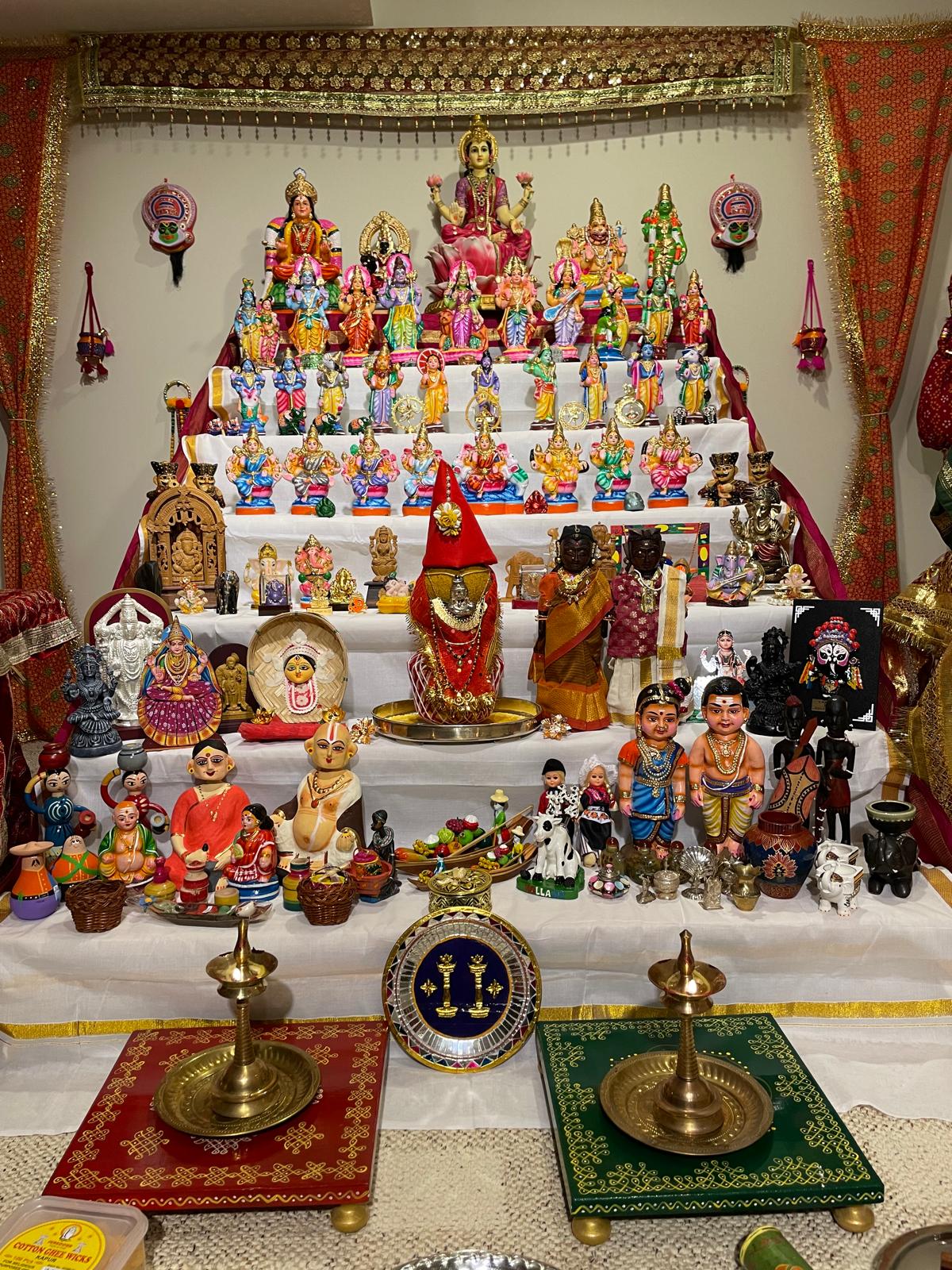
This Navratri Golu displayed in a Mumbai home depicts scenes from mythology as well as dolls and figurines representing ordinary people like merchants, musicians, and village scenes. Every year, a new doll is added to the collection. The family gathers in front of the Golu and does Puja each night. On Dussehra night, the figures of Gods among the dolls are put to sleep. (Photo Dipta Joshi)

Golu Dolls was put up for sale at an exhibition by the Handicrafts Artisans Trade and Welfare Association, Puducherry, at Arya Gowder Road in West Mambalam, Chennai. Golu dolls are also kept on sale on pavements at various spots on Arya Gowder Road. (Photo Vishnu Sharma)

Bathukamma is a festival welcoming Devi Durga with flowers on the 6th day of Navaratri. During the prayers, ladies dance with flowers in a procession. The flowers are finally immersed in the water. This year, the Bathukamma celebrations held at Telangana Raj Bhavan were attended by the First Lady of Telangana, Sudha Debbarma, along with the state Chief Secretary, A. Shanthi Kumari and others. (Photo Manisha Ghosh)

Rituals are being performed to the idol of Goddess Durga at Madras Kalibari Temple at Umapathy Street Extension at West Mambalam in Chennai as a part of Durga Pooja celebrations. (Photo Vishnu Sharma)

A couple receiving blessings from the idol of Goddess Saraswathi during the Navratri festival at Gokarnanatheshwara Temple, Kudroli, Mangalore. Thousands of devotees gather here to seek the Devi’s blessings each day during the nine-day festival. (Photo Satheeshan. K)

Navratri in Gujarat attracts huge crowds for synchronised dancing. It is estimated that about 40,000 players of all age groups, including 80-year-olds, have participated in the United Way Garba Mahotsav at Vadodara this year. (Photo Payal Pherwani)
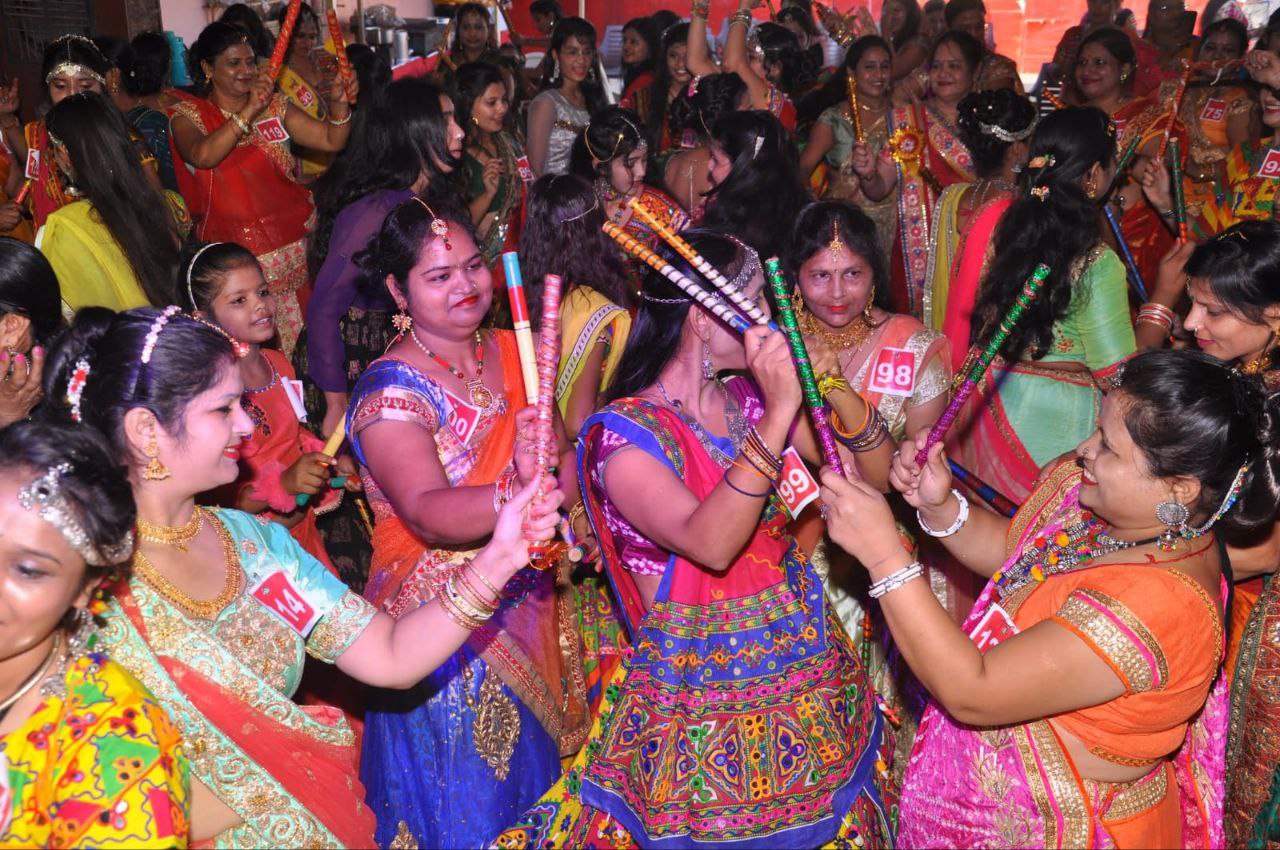
Women of all ages come together to celebrate Durga puja by playing dandiya in a vibrant display of tradition at Bharatpur, Rajasthan. (Photo Vanshita Jain)
Copy Editor: Megha Mann

